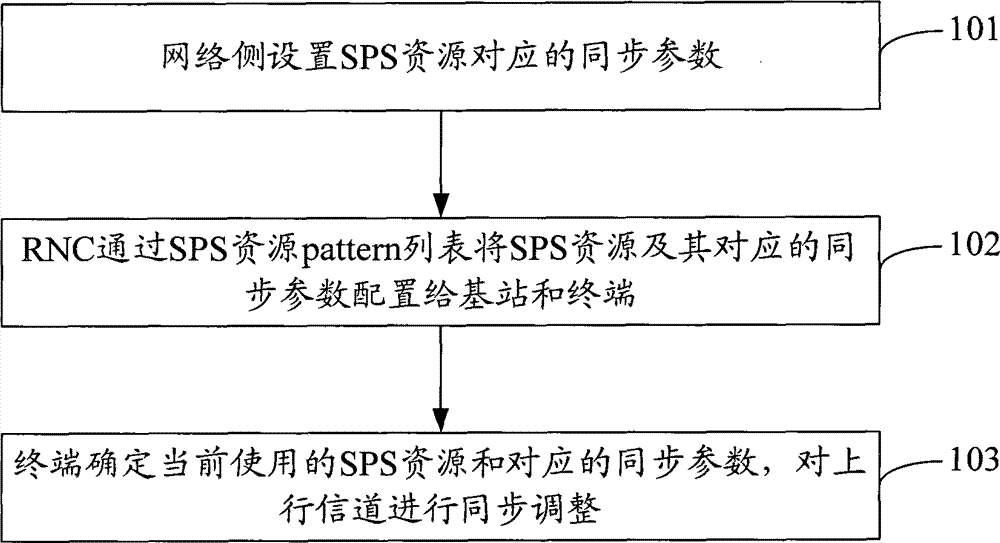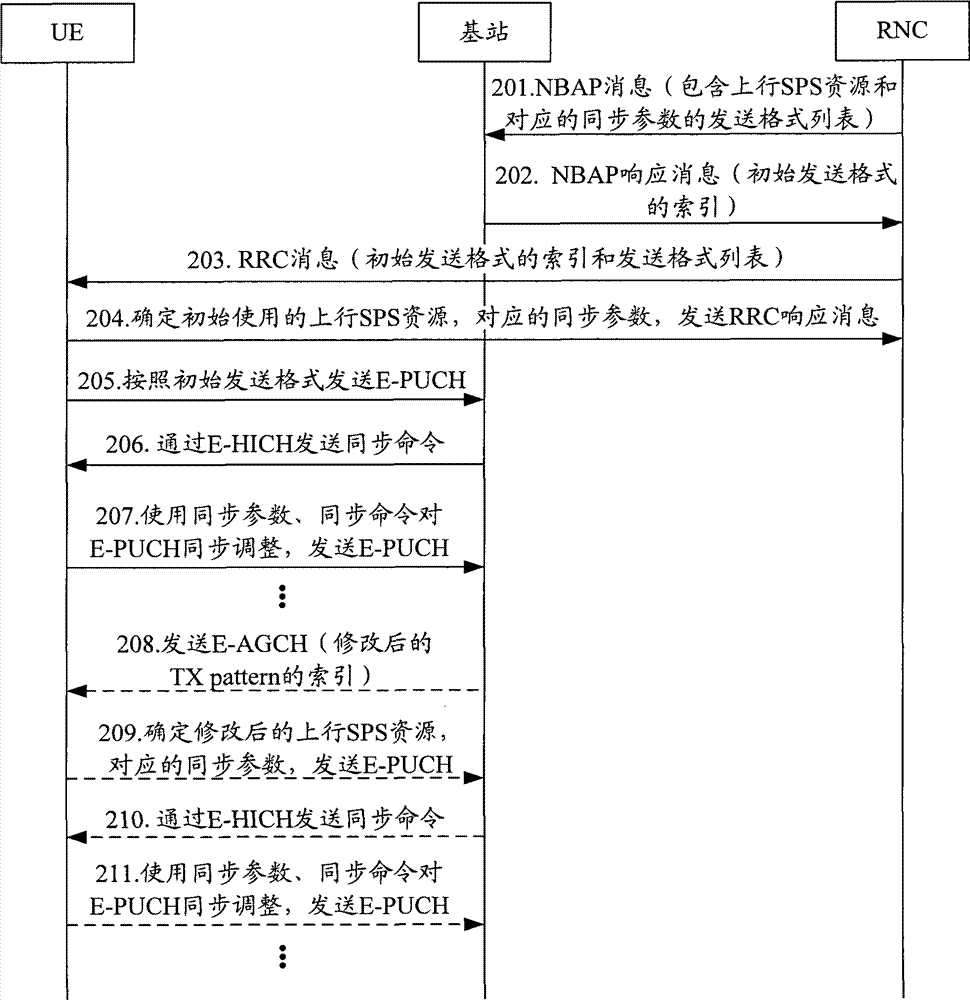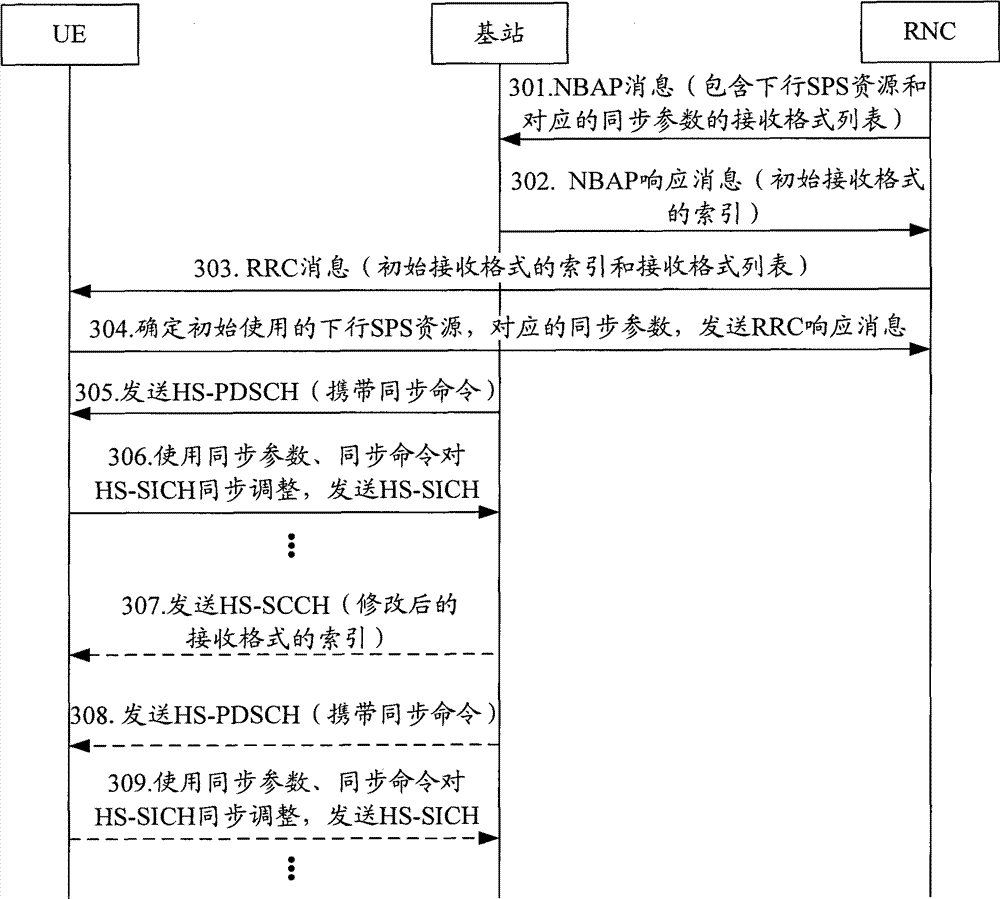Method and system for synchronous control in semi-persistent scheduling mode
A semi-persistent scheduling and synchronization control technology, applied in the field of communication, can solve the problem of out-of-synchronization of UE sending uplink channel
- Summary
- Abstract
- Description
- Claims
- Application Information
AI Technical Summary
Problems solved by technology
Method used
Image
Examples
Embodiment 1
[0078] Embodiment one, as figure 2 Shown is the synchronization control process for uplink SPS resources, including the following steps:
[0079] In step 201, the RNC configures a TX Pattern list including synchronization parameters to the base station through an NBAP message.
[0080] The format of the cells included in the TX Pattern list is shown in Table 1, and will not be repeated here. The NBAP message may be: a radio link establishment, or radio link reconfiguration, or radio link addition, or radio link modification message.
[0081] In step 202, the base station selects a Tx Pattern for initial transmission (referred to as the initial Tx Pattern) from the Tx Pattern list, and returns the index of the initial Tx Pattern to the RNC through an NBAP response message.
[0082] The base station saves the Tx Pattern list after receiving it, selects a Tx Pattern for initial transmission from the Tx Pattern list, and returns an NBAP response message to the RNC, which contai...
Embodiment 2
[0101] Embodiment two, image 3 Shown is the synchronization control process for downlink SPS resources, including the following steps:
[0102] In step 301, the RNC configures the RX Pattern list to the base station through an NBAP message.
[0103] The cell format included in the RX Pattern list is shown in Table 1, and will not be repeated here. The NBAP message may be: a radio link establishment, or radio link reconfiguration, or radio link addition, or radio link modification message.
[0104] In step 302, the base station selects an Rx Pattern for initial transmission (referred to as the initial Rx Pattern) from the Rx Pattern list, and returns the index of the initial Rx Pattern to the RNC through an NBAP response message.
[0105] The base station saves the Rx Pattern list after receiving it, selects an Rx Pattern for initial transmission from the Rx Pattern list, and returns an NBAP response message to the RNC, which contains the index of the RX pattern used for ini...
PUM
 Login to View More
Login to View More Abstract
Description
Claims
Application Information
 Login to View More
Login to View More - R&D
- Intellectual Property
- Life Sciences
- Materials
- Tech Scout
- Unparalleled Data Quality
- Higher Quality Content
- 60% Fewer Hallucinations
Browse by: Latest US Patents, China's latest patents, Technical Efficacy Thesaurus, Application Domain, Technology Topic, Popular Technical Reports.
© 2025 PatSnap. All rights reserved.Legal|Privacy policy|Modern Slavery Act Transparency Statement|Sitemap|About US| Contact US: help@patsnap.com



